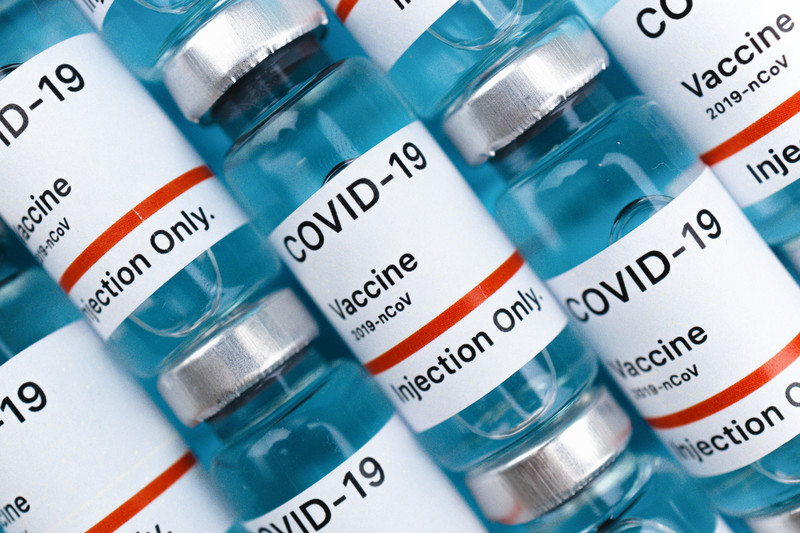Global path to end a global pandemic
28 April 2021 | Story LAURA RAWDEN. Photo Maksim Goncharenok, PEXELS. Read time 5 min.
If the current rate of COVID-19 vaccination continues, global herd immunity will be reached in 2025. Not only would this trajectory create conditions that fuel new variants, but it will leave out the world’s poorest countries.
According to a perspective paper published in the New England Journal of Medicine on 8 April 2021, current global vaccination rates of roughly 6.7 million doses per day translate to achieving herd immunity in 4.6 years.
Worryingly, it says 80% of the people in low- and middle-income countries won’t receive any vaccination this year.
The paper, which was co-authored by University of Cape Town’s (UCT) Professor Linda-Gail Bekker, calls for global leaders to look beyond national interests to urgently address bottlenecks in allocating and disseminating vaccines.
“The inequity in terms of vaccine allocation globally is stark and that has enormous consequences for how we fight this disease,” says Bekker, who is also the director of the Desmond Tutu HIV Centre at UCT’s Institute of Infectious Disease and Molecular Medicine (IDM).
“There has to be an understanding that it’s a global world and the haves need to help out the have nots.”
Vaccine nationalism
To visualise the scale of inequity, one only needs to visit the Reuters COVID-19 vaccination tracker. A real-time showcase of global vaccine rates, it shows 117 countries worldwide have begun vaccination campaigns.
In wealthy countries like the United States (US) and United Kingdom, at least one vaccination has been given to over 40% of their populations. In South Africa, just 0.5% of the population has received a vaccine.
Others have purchased enough doses to vaccinate their population several times over. Canada, for example, has procured eight doses for each resident.
Such competitiveness feeds a widespread assumption that countries are responsible solely for their own populations. According to Bekker and her co-authors, this vaccine nationalism is “short-sighted, ineffective and deadly”.
Vaccine nationalism not only overlooks the global nature of supply chains in vaccine manufacturing, where multiple suppliers from around the world need partnerships to distribute raw materials, consumables and reagents, it also neglects the impact of a patchwork immunity on driving variants.
“If countries can’t embrace the social justice or moral standpoint here, they can at least see it as a public health strategy,” says Bekker. “With large parts of the world unvaccinated we’ll allow transmission to continue and low- and middle-income countries will dish up more variants of concern.” Currently there are five known COVID-19 variants.
Though countries like the US and the G7 nations do support global vaccine procurement through the Covid-19 Vaccines Global Access (COVAX) programme, Bekker says it may not be enough to vaccinate at least 20% of its participating low-and middle-income countries.
The goal in principle is commendable, but it gets us nowhere near herd immunity,
Helping the have-nots
Bekker recalls historic inequities in access to essential medications and treatment in the Global South, specifically during the global HIV epidemic.
“I’m transported back to 2000 when lifesaving antiretroviral therapy was available in the first world and not in Africa, yet the burden of disease sits here,” she says.
At that time, the US took on a leadership position by creating the President’s Emergency Plan for AIDS Relief (PEPFAR) and the Global Fund to Fight AIDS, Tuberculosis, and Malaria, which have been critical to ensuring global scale-up of antiretroviral therapy.
“PEPFAR was game-changing for its countries and that was due to largess from a first world country,” says Bekker. “We’re trying to evoke that approach and say you can be leaders again to ensure lifesaving vaccines go to the have nots.”
Bekker and her colleagues propose the launch of what experts have dubbed a President’s Emergency Plan for Vaccine Access and Relief (PEPVAR).
Building on PEPFAR’s success, they say PEPVAR could focus on equitable distribution, workforce development and future pandemic preparedness, while supporting development of vaccines to address viral variants.
COVID-10 exit strategy
Africa has recorded 4.4 million COVID-19 infections and 117,000 deaths as of February 2021, according to the Africa CDC. The pandemic has also contributed to the continent’s first recession in 25 years.
“We’ve learned that using strategies like lockdown and economic suppression have come at a huge cost and one that Africa and countries across the world are struggling to bear,” says Bekker.
For her, vaccination must be the exit strategy to the pandemic. “Vaccines are a viable option that feels less fraught because you don’t have the cost of lives or economies,” she says. “But you do need the supply and purchasing capability, both of which have been thwarted in the Global South.”
With a growing number of voices calling for an end to vaccine nationalism, including international bodies like the WHO and South African advocacy group the Health Justice Initiative, she is cautiously optimistic.
“We will continue to beat the drum in the hopes that rationality and generosity will prevail,” she says.
 This work is licensed under a Creative Commons Attribution-NoDerivatives 4.0 International License.
This work is licensed under a Creative Commons Attribution-NoDerivatives 4.0 International License.
Please view the republishing articles page for more information.
Research & innovation





































